No, no, it's not them, although probably very similar 😄 . Let me tell you and show what it is.
Still some forty years ago, few people heard about this bivalve mollusk with the strange name "Geoduck"outside the US and Canada. And in just four decades, geoduck (Latin Panopea generosa) in some unthinkable way managed to turn from an unknown clam into an exquisite delicacy.
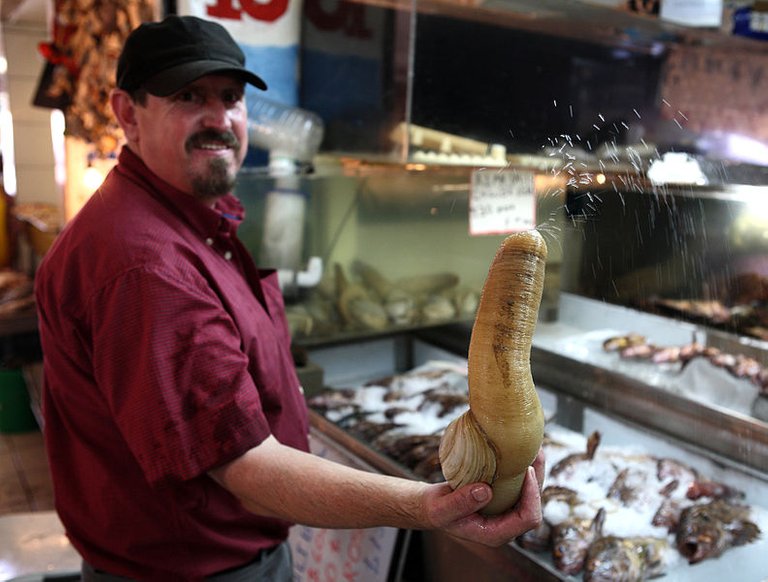
Image from:wikimedia.org-Author:Tomascastelazo-License:(CC BY-SA 3.0)
It is so popular that only one of the fishing companies extracts more than two million geoducks a year from the northwestern coast of the United States and Canada. Further mollusks go on a trip to restaurants in North America, where they are soaked in wine vinegar and served with rice, or are in the hands of Japanese chefs who cook sushi and sashimi from them. In the fish markets of Hong Kong, the cost of one geoduck exceeds two hundred dollars.
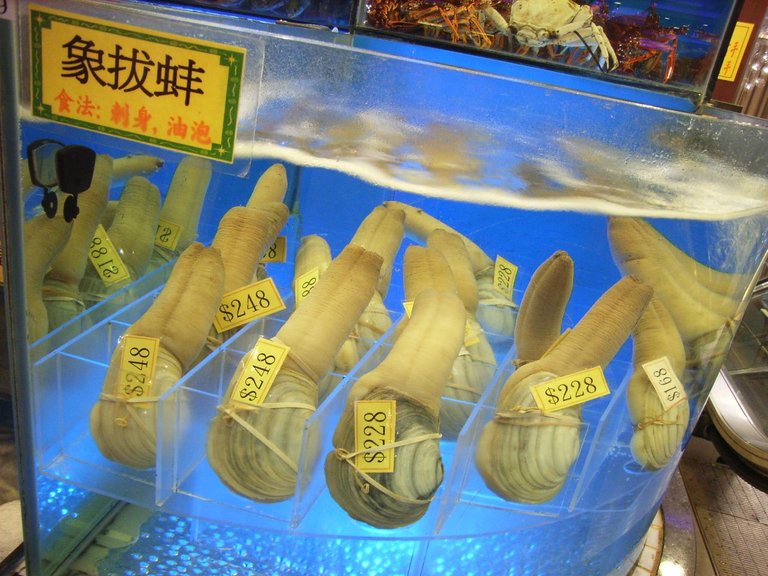
Image from:wikimedia.org-Author: Starest Westst-License:(CC BY-SA 3.0)
The very name "geoduck" is borrowed in one of the Indian dialects: by the word gweduc, locals denote unusual mollusks that know how to dig deep. The appearance of Geoduck is really different from that of ordinary mollusks. From a relatively small, up to 20 centimeters in length, the shell emerges something like an elongated neck, similar to the elephant's trunk. This so-called siphon is an organ that shellfish uses for a variety of purposes, from movement and breathing to nutrition and reproduction.
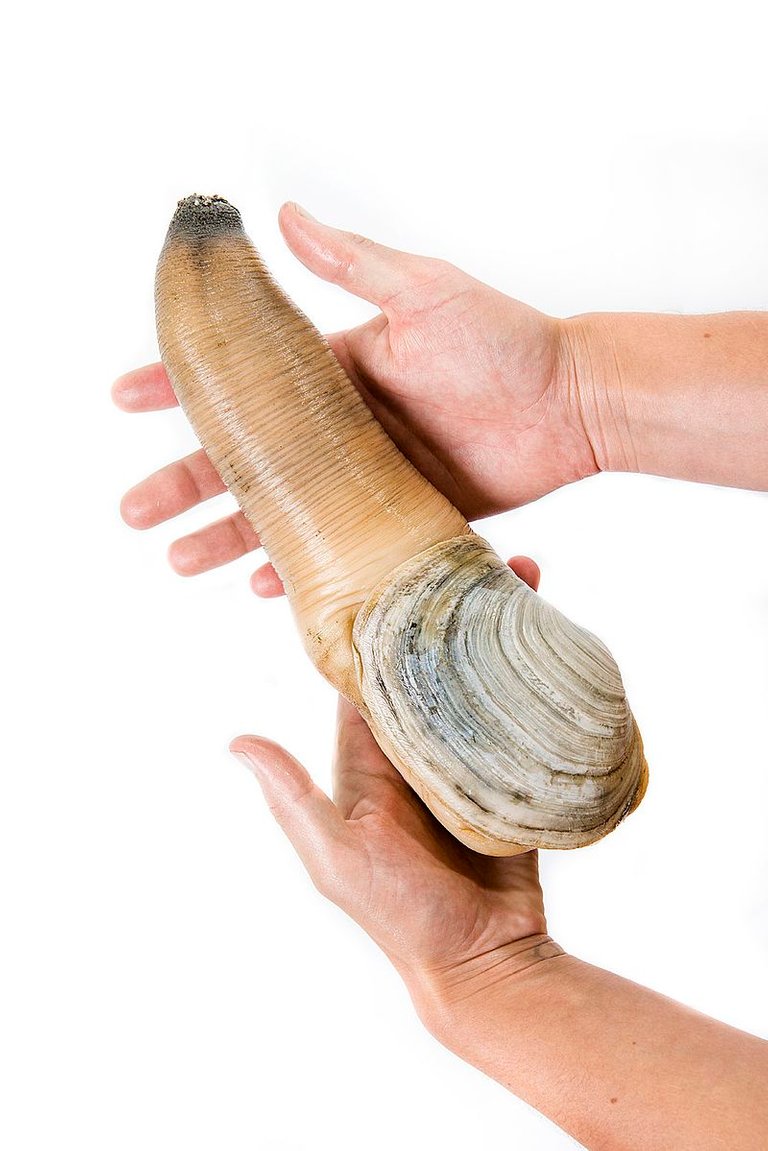
Image from:wikimedia.org-Author:Explicit-License:(CC BY 4.0)
Geoduck his double-siphon is necessary to filter the water, extracting plankton from it: in one half the water enters the sink, and through the second, already filtered, pours back. The length of the siphon in geoduck is about a meter with a small one, but specimens with two-meter siphons, although rare, are encountered.
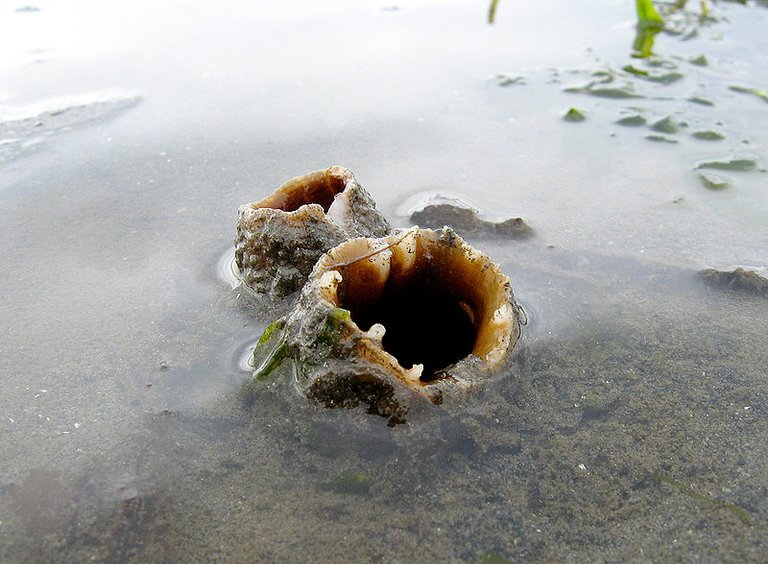.jpg)
Image from:wikimedia.org-Author:Überraschungsbilder-License:(CC BY-SA 2.0)
This mollusk is known as one of the longest living animals: about 146 years old, and the age of the oldest specimen was 160 years old. There are two possible explanations for such longevity. The first - not too intense metabolism, the second - the lack of natural enemies. The only predators that are capable of inflicting damage to the mollusk are small sharks and sea otters, capable of extracting the geoduck from the ground, as well as sea stars that attack the siphon located on the surface of the ground. Fertilization in geoducks is external. During its 100-year life, females throw about five billion eggs into the water column.
If the mollusk siphon is on the surface, it can attract the attention of sea stars, who are sure to rush into the attack. However, they need to hurry - the geoduck hides his "neck", as the turtles do, and be out of the reach of hunters. Under such conditions mollusks can live a long life, which they successfully do, surviving up to 100-150 years. Geoducks are rightly considered the second (after turtles) long-livers among animals, and on the rings on their shells scientists are studying climate change.
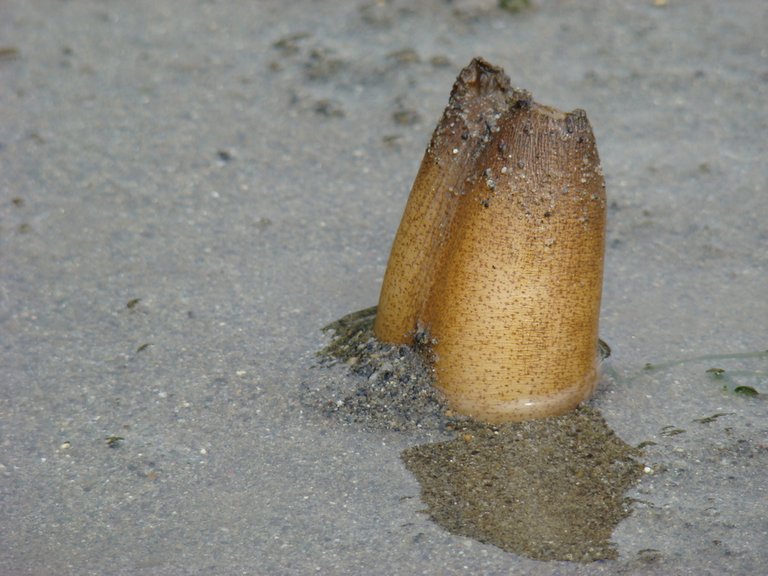
Image from:wikimedia.org-Author:Jeff-License:(CC BY 2.0)
Geoduck breeds in a non-contact way: several times a year, in late winter or early spring, males throw dense clouds of semen into the water, which fertilizes females. Females lay millions of eggs. In just 48 hours, the eggs turn into bivalve mollusks covered with brittle shells, which after a few weeks fall to the bottom and begin to burrow into the sand.
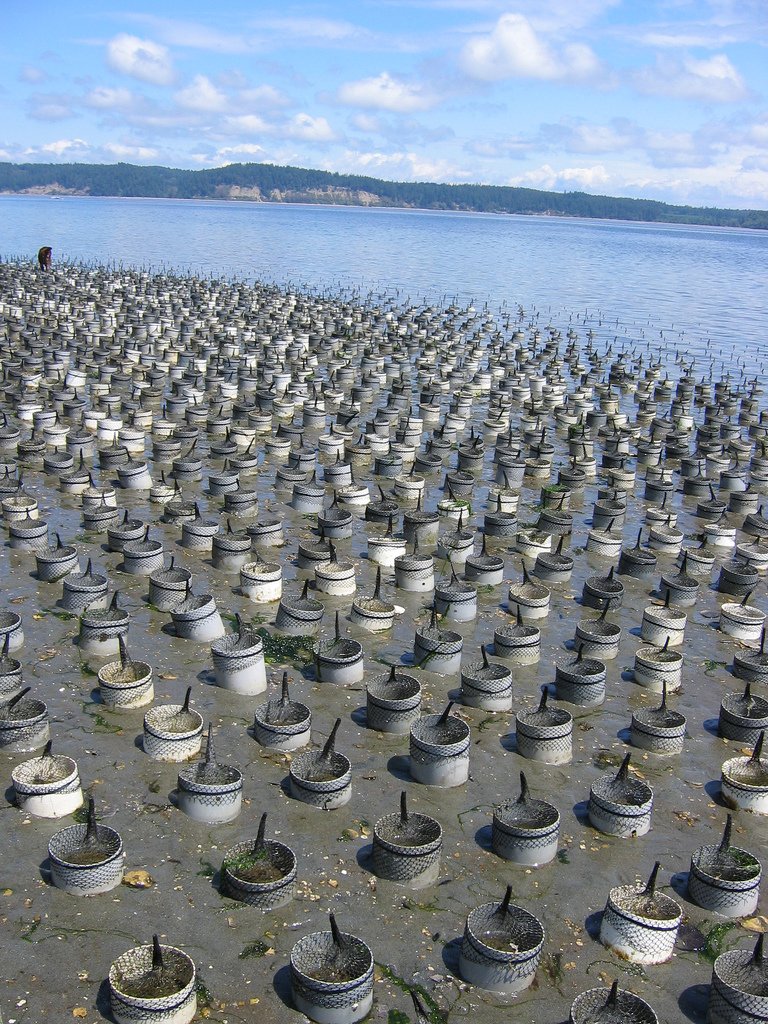
Image from:flickr.com-Author:Jeff-License:(CC BY 2.0)
The meat of the shellfish is quite tough and resembles the taste of the sea ear. Americans cut geoduck into pieces, beaten and fried in butter with onions, but the main consumers of geoduck are Japanese and Chinese. The Japanese named the geoduck "murugai", it is scalded, pulls the skin, removes the insides, thinly sliced and made from them sashimii and eaten raw.

Image from:pixabay.com-License:(CC0 1.0)
Meat is widely used in sashimi, it is appreciated for its crispy texture and piquancy of taste. For six seconds, the clams are kept in steep boiling water. Then the stocking is removed, the shell and the insides are separated, cut with a sharp knife into thin transparent plates. Eat, dipping into soy sauce, with pickled ginger and wasabi. It is believed that the use of geoduck in food contributes to the growth of male potential. I will not be able to show you dishes from geoduck, due to copyright on the photos. By this link you can see the appearance of these dishes.
That's how people hunt them.... impressive video about collecting and preparing penises geoducks 😄:
References Used:
https://en.wikipedia.org/wiki/Geoduck
https://www.eater.com/2016/7/17/11691958/what-is-geoduck
https://en.wikipedia.org/wiki/Nisqually_people
http://blog.seattleaquarium.org/marine-animals/geoducks/
https://www.alibaba.com/showroom/panopea-generosa.html
https://shizuokagourmet.com/2012/03/22/japanese-shellfish-5-gaper-mirugai-%E6%B5%B7%E6%9D%BE%E8%B2%9D/
My previous posts on this topic (Eroticism in nature):
Clouds are similar to the udder. Eroticism in nature!
This is so crazy. I've never seen anything like these mollusks. I need to take a trip to Japan..
They have a large habitat